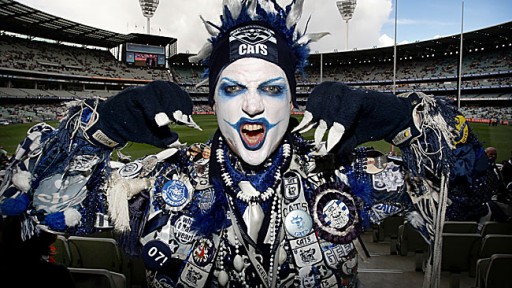Australian football is the best game in the world, and I’m here to answer all your questions about it.
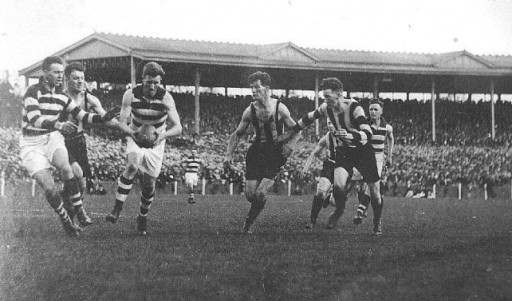
As the name would suggest, it is only played in Australia. The Australian Football League (AFL) started out as the Victorian Football League in 1877, which means that the sport is actually older than Australia as a nation! (Australia was originally a number of small British colonies, and didn’t become a federated nation until 1901).
Now, let me answer all of your burning questions about AFL.
Which team should I go for?
The league currently has 18 teams, 10 of which are Melbourne based.
Of the rest, there are two based in Sydney, two in Western Australia, two in Adelaide, and two in Queensland. Poor little Tasmania is still unrepresented.
I go for Richmond Tigers, one of the oldest Melbourne based teams, and you should too. In my humble opinion as the Nunnery AFL expert, they are the greatest team of all time.
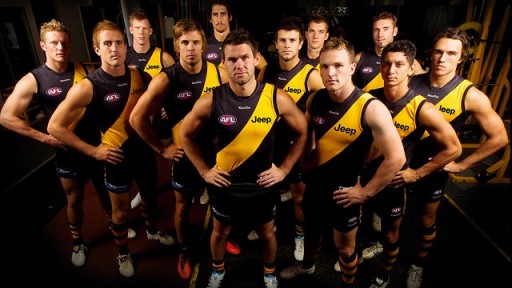
When is the AFL season?
Australian football is a winter sport. The home and away season usually starts in late March and there are 23 rounds with 9 games played per round. The last round of the home and away season is in late August. After the home and away season ends, the finals begin, with the top 8 teams on the ladder heading into the finals series. The finals are played during September, with the grand final played in the last weekend of September or first weekend of October.
The finals are a huge deal in Melbourne and grand final tickets are very highly sought after. If you’re interested in going to a game, tickets to home and away season games are much cheaper and easier to get.
Where do they play?
Not all games are played in Melbourne, there are stadiums in Sydney, Adelaide, Perth and Brisbane that host AFL games.
Of the games played in Melbourne, they are split between the Melbourne Cricket Ground and Etihad Stadium.
Melbourne Cricket Ground, also known as “the G” or “MCG”, is about a 20 minute walk from the Nunnery/Fitzroy. It is the largest stadium in Australia and was built in 1853. It has a capacity of 100,000 people, and it does fill up during the home and away season of AFL if two of the big clubs are playing. The grand final is always played here.
Etihad Stadium is situated near Southern Cross Station, on the other side of the city, near Docklands. It is a newer stadium, built in 2000, and has a capacity of 60,000. The advantage of Etihad Stadium is that it has a roof that can be closed when rain is forecast.
If you’re choosing between games at these two stadiums, choose the MCG. It’s bigger and better.

What are the rules?
Strap yourself in:
BALL
This is the ball.
It’s oval, there is only one ball on the field, and the players can kick it or handball it.
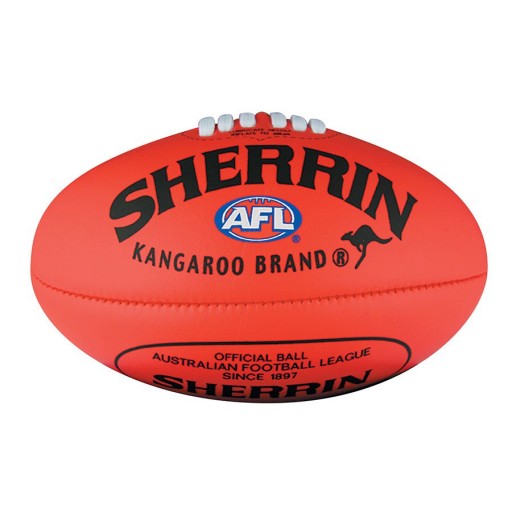
KICKING
To kick it, the player holds the ball and drops it onto his foot, propelling it through the air.
If a player, from the same team or the other team, catches the ball, it is called a ‘mark’ and the play stops. The player gets about 10 seconds to decide what to do (whether to kick, handball or run with the ball) and opposing players cannot tackle him to try to get possession.
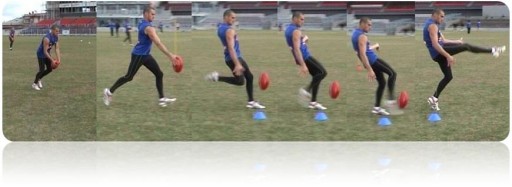
HANDBALLING
To handball it, the player must hold the ball with his hand underneath the ball, and use his other hand in a fist to propel the ball. Throwing, like in basketball, is not allowed in AFL and will result in a free kick to the other team.
If someone catches it (whether it be from their team or their opponents), the play does not stop! The player must be very fast and be sure to avoid any tackles, otherwise they may be penalised.
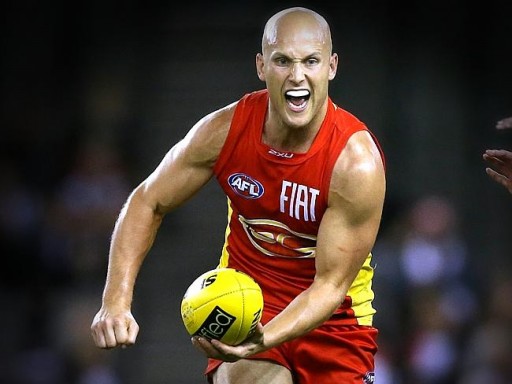
PLAYERS
There are 18 players on the field for each team, plus 4 more on the bench.
PLAYING TIME
There are four quarters in an AFL game, and in each quarter, the teams switch the goals that they are kicking towards (like in soccer). Each quarter runs for around 27-33 minutes, depending on how many stoppages there have been; for example, if a player gets seriously injured, removing them from the field may take a few minutes which are added to the playing time of that quarter (like ‘extra time’ at the end of each half in soccer). As a result, sometimes players and fans at the game do not know how much time is left in a quarter, which can make for a very exciting and suspenseful game if the scores are very close!
At the end of the game, the team with the higher score wins. If the game is a draw, which is rare, there is no extra time, the game is just recorded as a draw. If a finals game results in a draw, there is a rematch (this happened in the grand final in 2010!).
GOALS
Look at these goalposts below.
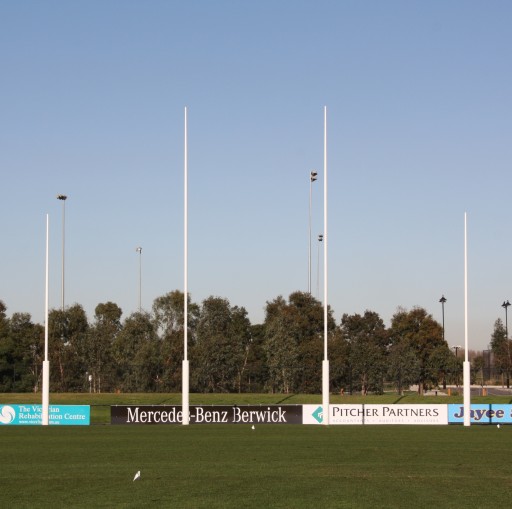
If a player kicks the ball and it goes between the two taller middle posts (regardless of whether it bounced before it went over the line, or whether it was in the air or on the ground when it went over the line), it’s a goal!
A goal is 6 points.
If a player kicks the ball between a tall post and a short post, it is a ‘behind’ or a ‘point’.
A behind is 1 point.
Goals can be kicked from anywhere on the pitch, obviously limited by the physical capability of the player, so they don’t need to be in some special zone in order to kick a goal. Some famous goalkickers have kicked goals from 70m away from the goal.
Goals are great! Everyone celebrates goals. Behinds are not celebrated, because the player has missed the main goals. Booooooo!
RUNNING WITH THE BALL
Players can run with the ball. They must bounce the ball, similar to how basketball players must bounce when they run down the court, but AFL players do not need to bounce the ball for every step – they only need to bounce the ball once per 15 metres that they run.
If a player is running with the ball, they can be tackled by a member of the other team, and if the tackle is successful the umpire will award a free kick to the team whose player tackled the player in possession of the ball.
OUT OF BOUNDS
AFL is played on an oval shaped ground. If the ball goes out of bounds, and bounces before it gets there, the boundary umpire will throw the ball back in. This means that it is not to either team’s advantage.
If the ball goes out of bounds because a player has kicked it there and it hasn’t bounced before it went out of bounds, it is deemed to be ‘out on the full’ and the opposing team gets to kick the ball in from the boundary line (kind of like a soccer throw in).
POSITIONS
All players have a certain position on the field; full forward, half forward, midfielder, half back, full back, etc. They are not limited to where they can go on the field; any player can go anywhere. But most of the time you will notice that players stick to their general areas. There is no such thing as offside in AFL.
TACKLES
Players can tackle a member of the opposing team if they are in possession of the ball.
Players are penalised if the tackle is too high (eg. clips the shoulder or head of the other player), if it is too aggressive (eg. throws the other player to the ground) or if the other player is not in possession of the ball.

FREE KICKS
A lot of free kicks are awarded in AFL. The free kick is taken from wherever the offending conduct happened on the ground. A lot of free kicks are penalties for rough conduct on a player of the opposing team, eg. tackling too high or making heavy contact during play.
I hope I have sufficiently educated you, although I’ve probably just confused you more – it will become clearer when you see a game in action.
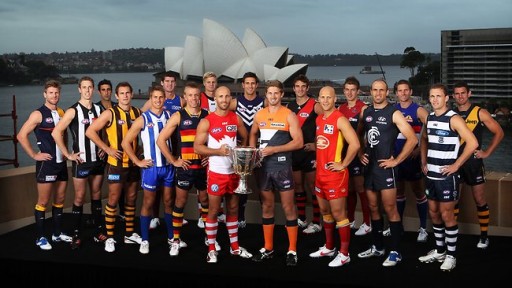
Is it worth going to a game even if I don’t barrack for a team or understand the rules?
Absolutely. If you’re going to a game between two big teams, the atmosphere is electric and you’ll have a great time regardless of whether you know what’s going on. Sometimes watching the supporters is more entertaining than watching the game itself. Melburnians take their football very very seriously.
